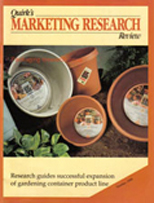A picture is worth a thousand words
During the last year, while assessing banks under the federal Community Reinvestment Act (CRA), the Office of the Controller of the Currency (OCC) has begun to place more emphasis on documentation-to get an accurate picture of how extensively banks are investing in low-income areas in the communities they serve.
"CRA was enacted in 1977, but the specific responsibilities of financial institutions were not entirely clear," explains Don Holstein, vice president, Marine Midland Banks, Inc. community banking sector. "Then last March the federal regulatory agencies issued a joint statement clarifying CRA as it relates to bank duties and responsibilities. As a result, banks are improving documentation of existing CRA programs and, in some cases, are developing new programs to increase market penetration in CRA target areas."
Redlining
CRA was originally developed to eliminate a practice known as "redlining," in which some banks were said to avoid doing business in poorer communities. The act requires that banks determine the credit needs of people in all the communities they serve and make loans and provide other banking services for qualified individuals.
Although there are no specific penalties associated with the act, a poor CRA rating can result in regulators delaying or prohibiting acquisitions, expansions, or new branch openings. In addition, after July 1, 1990 CRA ratings were made public. Therefore, effectively documenting CRA compliance has become an important issue to banks for both regulatory and public affairs reasons.
According to Holstein, the act is intended to bring dollars to low-income communities for buying homes, making home improvements, and small business loans. "Though the act does not exclude middle- and high-income areas, its focus is the low-income household," explains Holstein. "Specifically, banks are required to document their marketing activity in low-income communities. In our case, this means areas where 60 percent of the households in a census tract earn less than $25,000 a year."
Known for its customer service and product innovations, Marine Midland decided to verify its already solid CRA rating by instituting programs entirely focused on developing documentation for CRA.
A wholly owned subsidiary of the Hong Kong Bank group, Marine Midland has more than 300 branches throughout New York State providing broad-based lending and financial services to individuals, businesses, and government customers.
Geocode
For its first step in the effort to improve documentation for CRA, Marine renewed its existing semi-annual records of total market penetration across New York state. By using U.S. census data combined with computer-generated market information, Marine was able to "geocode" or geographically designate the exact number of bank customers in specific census tracts.
"Once we geocoded loans and deposits, we were able to see our exact market penetration in CRA target areas," says Holstein. '`However, the lengthy computer data and statistics made for tedious presentations. Our CRA examiner suggested we develop maps to show the same information visually."
Remembering that Marine's marketing department used computerized mapping services for branch-site location analysis, Holstein found his way to National Planning Data Corporation (NPDC), an Ithaca, New York-based marketing information company that supplies demographic forecasting products and services.
"NPDC technicians were able to integrate our market penetration data with U.S. census geography and income files," says Holstein. "We worked together to decide how to separate regions and choose, code, and color the variables."
Using cartographics - digitized reference points that relate to geography - NPDC produced 22 17- by 22-inch maps. Each map combines a paper base map with seven multicolored transparent overlays representing pertinent variables. The base map shows the market area name, bank branch locations, and census tract labels. One overlay represents the percentage of households in that area with annual incomes of less than $25,000.
Four of the overlays show outstanding credit dollars, outstanding deposit dollars, number of loans or credit units, and number of deposits or deposit dollars, for these households. A sixth overlay shows township names or road files, and the seventh shows ZIP code boundaries, which differ from census tract boundaries. Viewers can use up to two overlays at one time over each base map.
"The response to these maps has been terrific," reports Holstein. "Without having to sift through pages of data, both CRA examiners and our regional managers can clearly see market penetration in target areas."
Unique marketing tool
In addition to documenting CRA compliance, the maps have provided Marine Midland with a unique marketing tool, and have been instrumental in the development of several bank products.
"After viewing some of our maps, managers and marketers came up with an idea for a product called Basic Banking," says Holstein. Well-received by communities where it was introduced in July, this low-cost checking account is targeted toward low-income individuals who may not qualify for other checking accounts.
Another bank product that resulted from demographics research and mapping is called the Community Home Buyer's Program, which includes qualification concessions for first-time home buyers. This is a $5 million pilot program that provides mortgages to low and middle-income families in the Syracuse, New York area. If successful, the program will be implemented statewide.
Marine Midland is also involved in housing partnership programs with various cities and counties in New York State. These programs help provide affordable housing to qualified buyers.
"We've instituted programs profitable to both our branches and the communities they serve based on our documentation for CRA compliance," Holstein says. "The real breakthrough in our documentation has been the transition from verbal data to maps-from words to pictures. Because in the case of complicated statistical documentation, a picture can be worth a thousand words."
